Today Current Affairs: 20th October 2022 for UPSC IAS exams, State PSC exams, SSC CGL, State SSC, RRB, Railways, Banking Exam & IBPS, etc
Table of Contents
One Health Concept:

A new One Health Joint Plan of Action was launched by the Quadripartite-the Food and Agriculture Organization (FAO), the United Nations Environment Programme (UNEP), the World Health Organization (WHO), and the World Organisation for Animal Health (WOAH, founded as OIE).
- In April 2022 a pilot project in the state of Uttarakhand was launched to implement the One Health Framework by One Health Support Unit.
- One Health Joint Plan of Action : The Action plan developed through a participatory process, provided a set of activities that aim to strengthen collaboration, communication, capacity building and coordination equally across all sectors responsible for addressing health concerns at the human-animal-plant-environment interface.
- The plan is valid from 2022-2026 and is aimed at mitigating the health challenges at global, regional, and country levels.
One Health Concept:
- One Health is an approach that recognizes that the health of people is closely connected to the health of animals and our shared environment.
- One Health’ vision derives its blueprint from the agreement between the tripartite-plus alliance comprising the Food and Agriculture Organization of the United Nations (FAO), the World Organisation for Animal Health (OIE).
- It’s purpose is to encourage collaborations in research and sharing of knowledge at multiple levels across various disciplines like human health, animal health, plants, soil, environmental and ecosystem health in ways that improve, protect and defend the health of all species.
PM Kisan Samman Sammelan 2022:
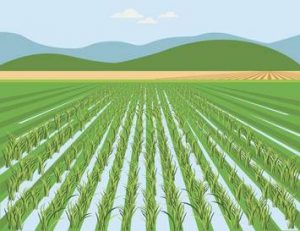
The Prime Minister Shri Narendra Modi inaugurated the PM Kisan Samman Sammelan 2022 at Indian Agricultural Research Institute in New Delhi.
Key Highlights :
- PM released the 12th installment of Pradhan Mantri Kisan Samman Nidhi (PM-KISAN) funds. Rs 16,000 crores were transferred to over 8.5 crore eligible farmers as part of the scheme.
- PM also inaugurated 600 ‘Pradan Mantri Kisan Samruddhi Kendras’ (PMKSK) under the Ministry of Chemicals & Fertilizers.
- Under this scheme, more than 3.3 lakh retail fertilizer shops in the country will be converted into PMKSK in a phased manner.
- These Kendras will cater to several farmer needs like providing agri-inputs (fertilizers, seeds, implements); testing facilities for soil, seeds, fertilizers; generating awareness among farmers; providing information regarding various government schemes and ensuring regular capacity building of retailers at block/ district level outlets.
- The PM also launched the ‘Pradhan Mantri Bhartiya Jan Urvarak Pariyojana’ – One Nation, One Fertilizer.
- Under this scheme, ‘Bharat Urea Bags’ are launched. These will help companies market fertilizers under the single brand name “Bharat
- An e-magazine on fertilizer, ‘Indian Edge’ also launched by the PM. It will provide information on domestic and international fertilizer scenarios, including recent developments, price trends analysis, availability and consumption, success stories of farmers, among others.
PM Kisan:
- It was launched on 1 Nov 2018 to supplement financial needs of land holding farmers.
- Financial benefit of Rs 6000/- per year in three equal installments, every four months is transferred into the bank accounts of farmers’ families across the country through Direct Benefit Transfer (DBT) mode.
- The scheme was initially meant for Small and Marginal Farmers (SMFs) having landholding upto 2 hectares but scope of the scheme was extended to cover all landholding farmers.
- It is a Central Sector Scheme with 100% funding from the Government of India.
- It is being implemented by the Ministry of Agriculture and Farmers Welfare.
Big Techs:
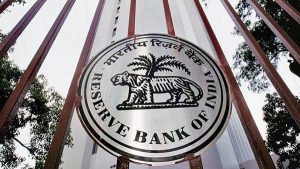
Report by Reserve Bank of India (RBI), large non-financial technology firms, referred to as “big techs,” pose challenges to financial stability owing to their technological advantages, large user base, wide-spread use by financial institutions and network-effects.
- Big techs include companies such as Alibaba, Amazon, Facebook, Google, and Tencent.
- They usually hold service licenses through subsidiaries or Joint Ventures with varying levels of ownership control and jurisdictional regulatory advantages.
- Big techs, given their pervasive adoption as third-party service providers, generally become the underlying platform on which a host of services are offered.
- This uniquely positions the big techs to easily acquire cross-functional databases which can be exploited for generating innovative product offerings, making them dominant players in the market.
- The pervasiveness of big techs provides them with a large client base who are entrenched in using their platforms/ products with access to multiple facets of customers’ data, generating strong network effects.
- The entry of big techs into finance also reflects strong complementarities between financial services and their core non-financial services.
- Besides the technological advantages, the big techs typically also have the financial muscle to withstand the competitive pressures.
Nihonshu:

The Embassy of Japan, New Delhi, has filed an application seeking Geographical Indication (GI) tag for nihonshu/Japanese sake.
- This is the first time a product from Japan has filed for a tag at the Geographical Indication Registry in Chennai.
- In Japan, nihonshu is regarded as a special and valuable beverage made from fermenting rice.
- People traditionally drink nihonshu on special occasions, such as festivals, weddings or funerals, but it is also consumed on a daily basis.
- Thus, it is an integral part of the lifestyle and culture in Japan.
- The sake market (almost all are nihonshu) is the second largest brewed liquor (such as beer) market in Japan.
- For making nihonshu three main raw materials – rice, koji-kin (a type of fungal spore) and water – are required.
- The production of nihonshu follows an alcoholic fermentation method called parallel multiple fermentation and involves raw material treatment, koji making, starter culture making, mash making, pressing, heat sterilisation and bottling.
- The rice and koji used should originate in Japan.
Kamikaze Drones:

Ukraine’s capital region was struck by Iranian-made kamikaze drones.
- These kamikaze drones are not new, and have also been supplied by the US to Ukraine in its ongoing war with Russia.
Kamikaze Drones:
- These are small unmanned aircraft that are packed with explosives that can be flown directly at a tank or a group of troops that are destroyed when it hits the target and explodes.
- They are called Switchblade because their bladelike wings spring out on launch.
- The drones have the capability of going past traditional defences to strike its targets and also cost a fraction of what the larger counterparts do.
- These small lethal drones are difficult to detect on radar, and they can even be programmed to hit targets without human intervention, based on facial recognition.
- Although the Kamikaze might be the most advanced form of this genre of drones, Russia, China, Israel, Iran and Turkey all have some version of it.
Booker Prize:

Sri Lankan author Shehan Karunatilaka has been named the winner of the 2022 Booker Prize for his second novel The Seven Moons of Maali Almeida.
- The Booker Prize for Fiction, formerly known as the Booker–McConnell Prize and the Man Booker Prize, is a literary prize.
- Objective: To promote the finest in fiction by rewarding the best novel of the year written in English.
- The Booker Prize awards any novel originally written in English and published in the UK and Ireland in the year of the prize, regardless of the nationality of their author.
- The novel must be an original work in English (not a translation)
- It must be published by a registered UK or Irish imprint; self-published novels are not eligible.
- Prize Money: The winner receives £50,000 as well as the £2,500 awarded to each of the shortlisted authors.
Rustom-2:
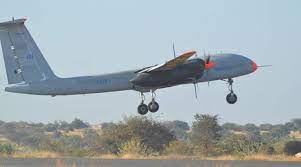
The indigenous medium altitude long endurance (MALE) unmanned aerial vehicle (UAV) is expected to complete all user trials by August 2023
- Rustom-2 is also known as Tapas-BH (Tactical Airborne Platform for Aerial Surveillance-Beyond Horizon 201).
- It has been designed and developed by the Aeronautical Development Establishment (ADE), Bengaluru, with the production partners being Hindustan Aeronautics Ltd. (HAL) and Bharat Electronics Ltd.
- It is powered by a small turbofan engine. The engine is Russian TRDD-50MT originally designed for cruise missiles.
- It is being developed to carry out surveillance and reconnaissance (ISR) roles and is capable of carrying different combinations of advanced payload and capable of auto landing, among others.
- Its navigation was done using GAGAN satellites through the onboard SATCOM system.
- High endurance UAVs are a priority requirement for the Indian armed forces especially in view of the stand-off with China in eastern Ladakh.
World Green City Award 2022:
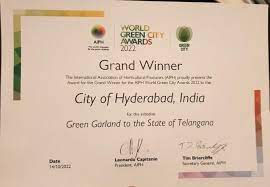
Hyderabad City has overall won “World Green City Award 2022” in the category “Living Green for Economic Recovery and Inclusive Growth”, at the International Association of Horticulture Producers (AIPH) 2022 World Green Cities Awards which was organised in Jeju, South Korea.
- The six categories of award are Living Green for Biodiversity, Living Green for Climate Change, Living Green for Health and Wellbeing, Living Green for Water, Living Green for Social Cohesion and Living Green for Economic Recovery and Inclusive Growth
- Hyderabad won “Living Green for Economic Recovery and Inclusive Growth” during the AIPH event.
- “Living Green for Economic Recovery and Inclusive Growth” category focuses on creating systems and solutions that allow all of the city’s residents overcome economic distress and grow.
Grievance Redressal Index:
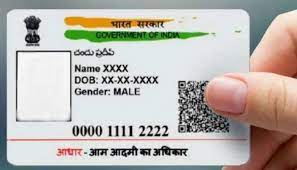
UIDAI tops the Grievance Redressal Index for the second consecutive month.
- Department of Administrative Reforms and Public Grievances (DARPG), releases a grievance redressal index on monthly basis.
- UIDAI’S grievance redressal ecosystem comprised of UIDAI HQ, its Regional Offices, Technology Centre, and contact centre partners. It enables UIDAI to resolve around 92% of grievances within a week.
- UIDAI is gradually rolling out an Open-Source CRM solution, which enables it to support multi-channels like phone calls, email, Chatbot, web portals etc for lodging, tracking and resolving grievances.
- It has launched IVRS services in 12 languages.
UIDAI:
- UIDAI was founded in 2009 but became a statutory body in 2016 under the Aadhar act.
- It is mandated to assign a 12-digit unique identification (UID) number (Aadhaar) to all the residents of India.
- It comes under the Ministry of Electronics & Information Technology.
Giraffes:
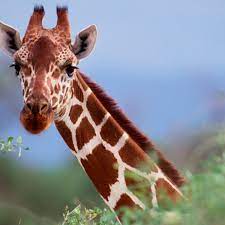
Giraffes brought to India by the British may belong to endangered species.
- A genetic distance analysis of the giraffes in Alipore showed that they were most closely related to Nubian and Rothschild giraffes.
- About 150 years ago, British colonialists brought batches of single species of the northern giraffe to India, from their other colonial possessions in Africa.
- These now comprise a captive population of 29 individuals of northern giraffes across the country.
- They are an exotic species that was imported into India, protocols to manage the populations were different when compared to animals that are native to the country.
- Giraffes are found in the wild only in Sub-Saharan Africa.
Nubian giraffes:
- It is the nominate subspecies of giraffes.
- Habitat: found in Ethiopia, Kenya, Uganda, South Sudan and Sudan.
- IUCN: The subspecies was listed as Critically Endangered by the IUCN in 2018 for the first time due to a 95% decline in the past 3 decades.
Rothschild’s Giraffe:
- It is also known as the Baringo giraffe, from the fact that it is seen in the wild around the area of Kenya close to Lake Baringo.
- Habitat: desert and savanna plains areas of Africa (primarily in eastern Uganda and western Kenya. )
- IUCN: Endangered
International Solar Alliance:

5th assembly of ISA has been inaugurated in India. India holds the office of the President of the ISA Assembly, with the Government of France as Co-President.
- The Assembly is the apex decision-making body of ISA, where each Member Country is represented.
- It meets annually at the ministerial level at the ISA’s seat.
- This year, the ISA Assembly will deliberate on three critical issues energy access, energy security, and energy transition.
About ISA:
- It is an intergovernmental organization, launched in 2015, with 110 Member and Signatory countries. I
- SA is the first such intergovernmental organization to be headquartered in India.
- Its mission is to unlock US$ 1 trillion of investments in solar by 2030 and reduce the cost of the technology and its financing.
- Important projects under ISA: One Sun One World One Grid (OSOWOG); ISA Solar Technology and Application Resource Centre (ISTAR C); Indian Technical and Economic Cooperation (ITEC) Scheme (for training).




